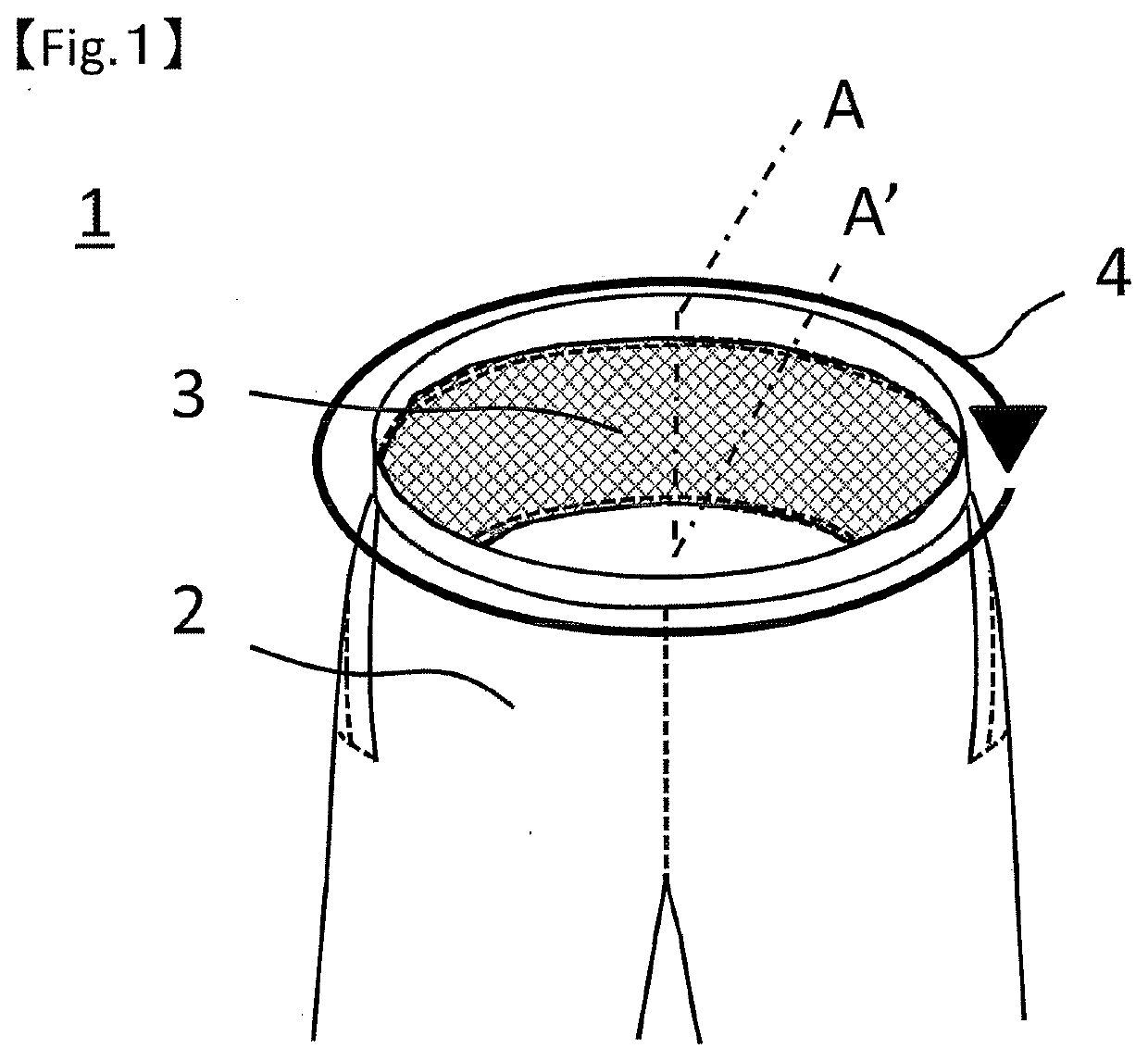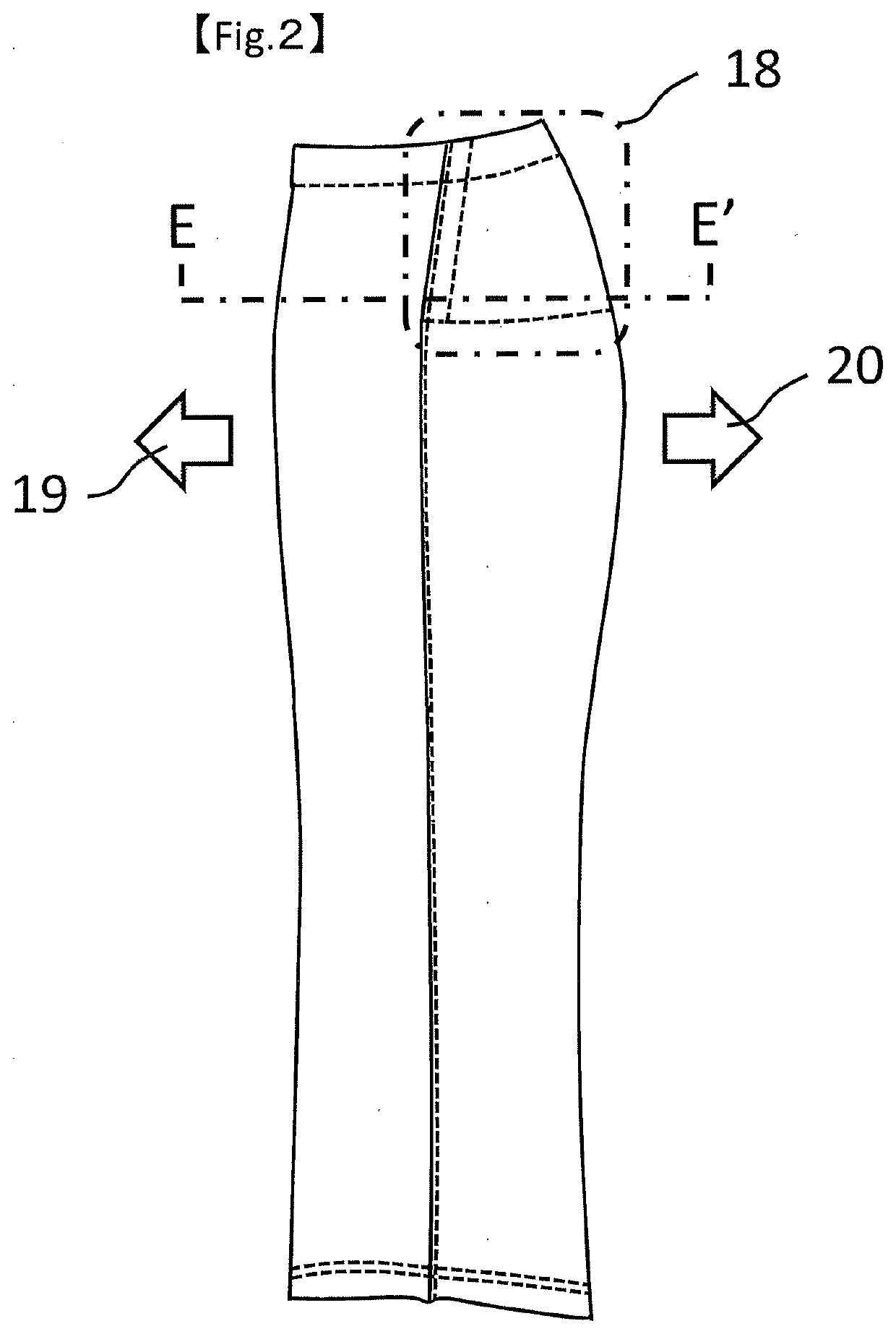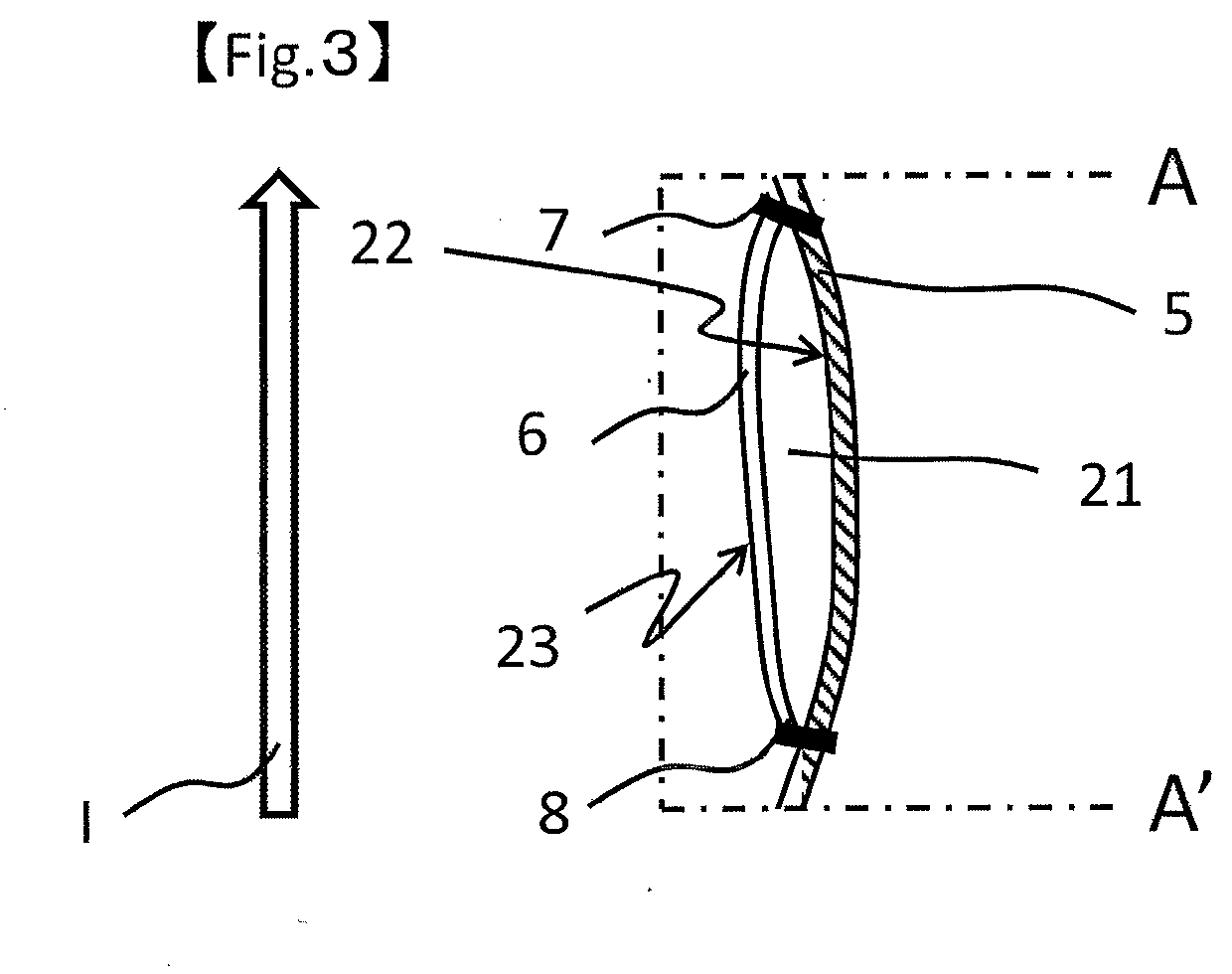Bottom wear
a technology for bottoms and bottoms, applied in the field of bottoms, can solve problems such as unpleasant feelings of wearers
- Summary
- Abstract
- Description
- Claims
- Application Information
AI Technical Summary
Benefits of technology
Problems solved by technology
Method used
Image
Examples
example 1
[0111]Polyethylene terephthalate yarns of 167 dtex and spun yarns with 65% of polyester and 35% of cotton were used as warp threads, and polyethylene terephthalate yarns of 167 dtex were used as weft threads to weave a warp double twill fabric at a warp density of 154 threads / 2.54 cm and a weft density of 64 threads / 2.54 cm, thereby obtaining a cloth A for cloth of bottom wear with 90% of polyester and 10% of cotton.
[0112]Subsequently, nylon yarns of 78 dtex and polyurethane elastic fiber of 310 dtex were used to knit a fabric, thereby obtaining a power net cloth with 82% of nylon and 18% of polyurethane (hereinafter, the power net cloth is referred to as a “cloth D”).
[0113]The cloth A for cloth of bottom wear bottom was used as a cloth of bottom wear to prepare a bottom wear having an appearance as shown in FIGS. 1 and 2 and an inner part as shown in FIG. 3. That is, the fabric of the cylindrical part rear portion in FIG. 3 is a bottom wear cloth on the back portion in the waist-en...
example 2
[0114]Nylon yarns of 44 dtex and polyurethane elastic fiber of 44 dtex were used to knit a tricot, thereby obtaining a tricot cloth with 70% of nylon and 30% of polyurethane (hereinafter, the tricot cloth is referred to as a “cloth E”). The same cloth A as used for the bottom wear in Example 1, and the cloth E were used to prepare a bottom wear having an appearance as shown in FIGS. 1 and 2 and an inner part as shown in FIG. 3. That is, the fabric of the cylindrical part rear portion in FIG. 3 is a bottom wear cloth on the back portion in the waist-encircling section of the cloth of bottom wear formed of the cloth A, and the fabric of the cylindrical part rear portion is the cloth E. The protection band for lumbago 1 shown in FIGS. 4 and 5 was attached to the cylindrical part of the bottom wear as in FIG. 6, and the rising suppression property was evaluated. Table 1 shows the physical properties of the fabrics forming the cylindrical part and the evaluation results of the bottom wea...
example 3
[0115]PTFE fiber of 3.3 dtex was used as warp threads to prepare a twill fabric with 100% of PTFE (areal weight: 522 g / m2), and the fabric was defined as a cloth B for cloth of bottom wear. The cloth B was used as the bottom wear cloth on the back portion in the waist-encircling section of the cloth of bottom wear, and the cloth A was used for other portions of the cloth of bottom wear to prepare a cloth of bottom wear. Further, the same cloth A as used in Example 1 was used to prepare a bottom wear having an appearance as shown in FIGS. 1 and 2 and an inner part as shown in FIG. 3. The fabric of the cylindrical part rear portion in FIG. 3 is the cloth B, and the fabric of the cylindrical part front portion (planar material) is the same cloth D as in Example 1. The protection band for lumbago 1 shown in FIGS. 4 and 5 was attached to the cylindrical part of the bottom wear as in FIG. 6, and the rising suppression property was evaluated. Table 1 shows the physical properties of the fa...
PUM
 Login to view more
Login to view more Abstract
- a cylindrical part including a cloth of bottom wear and a planar material different from the cloth, or a cylindrical part including a planar material different from the cloth of bottom wear is present at a back portion of the waist-encircling section and inside the bottom wear,
- the cylindrical part is disposed in such a manner that the axis direction of the cylindrical part is substantially parallel to the waist-encircling direction of the waist-encircling section,
- the static friction coefficient of the inner surface of a rear portion of the cylindrical part is 0.2 or more and 1.0 or less, and
- the stress of a front portion of the cylindrical part at 10% elongation in the transverse direction of the cylindrical part is 10 N/25 mm or less.
Description
Claims
Application Information
 Login to view more
Login to view more - R&D Engineer
- R&D Manager
- IP Professional
- Industry Leading Data Capabilities
- Powerful AI technology
- Patent DNA Extraction
Browse by: Latest US Patents, China's latest patents, Technical Efficacy Thesaurus, Application Domain, Technology Topic.
© 2024 PatSnap. All rights reserved.Legal|Privacy policy|Modern Slavery Act Transparency Statement|Sitemap



